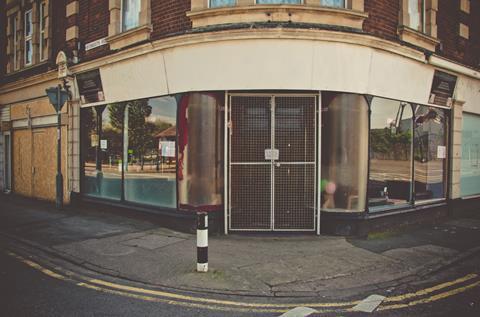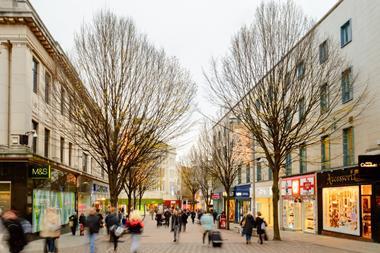
Retail vacancy rates improved in the fourth quarter of 2021, providing a “glimmer of hope” for the sector, according to the BRC.
Shopping centre vacancy rates improved 0.3 percentage points to 19.1% compared with the same quarter the year before, numbers from the Local Data Company suggested. They nevertheless remained 2% higher than 2020 levels.
High street vacancies improved by 0.1 percentage points to 14.4%, but remained higher than the 13.7% of quarter four in 2020.
The overall retail vacancy rate across Britain fell by 0.1 percentage point to 14.4% in the fourth quarter of 2021 compared with the same period the year before. It was still 0.7 percentage points higher than 2020 levels.
Retail park vacancies remained flat at 11.3%, the lowest rate by location type.
“The final quarter of 2021 offered the first glimmers of hope for Britain’s beleaguered shopping destinations, as the number of shuttered shops fell for the first time since the start of 2018,” said BRC CEO Helen Dickinson.
“The lowest vacancy rates were seen in the south – where higher disposable income and greater business investment meant vacant storefronts were more quickly repurposed. Meanwhile, Scotland and the north continue to see much higher vacancy rates, with the north east at almost one in five shops closed.”
Dickinson added: “It remains to be seen how Omicron will have impacted the number of store closures, but given the third lockdown in England had little impact on the vacancy rate, we are hopeful that the trajectory will remain positive.”
Local Data Company director Lucy Stainton said: “Vacancy rates are a strong barometer of the health of our high streets – with this in mind, it is very encouraging to see the increase in empty units finally stabilising after such a sharp rise over the past two years.
“This is the first real indication that the most significant structural impacts of the pandemic are potentially at their peak for certain regions, and operators, landlords and local government alike can start to rebuild after a particularly turbulent period.”



















No comments yet